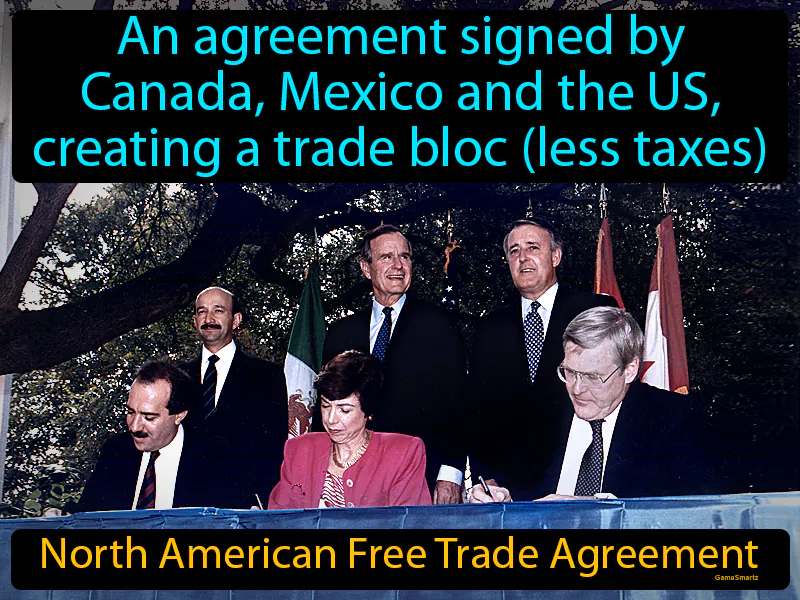North American Free Trade Agreement
North American Free Trade Agreement: Easy to understand
The North American Free Trade Agreement (NAFTA), effective in 1994, was a significant step towards economic globalization, allowing goods to move more freely between Canada, Mexico, and the United States. It highlighted tensions between economic growth and job security, as some industries benefited while others faced job losses due to cheaper imports. Today, these ideas still matter as debates continue over trade agreements and their impact on local economies and workers. For example, people may notice lower prices on certain goods because they are imported without extra taxes, but also see factories closing if production moves to countries with lower labor costs. This affects daily life by influencing job availability and the cost of everyday items like clothing and electronics.

Practice Version

North American Free Trade Agreement: An agreement signed by Canada, Mexico, and the US, creating a trade bloc less taxes. North American Free Trade Agreement. It is a trade deal that eliminated most tariffs and trade barriers between the three countries.